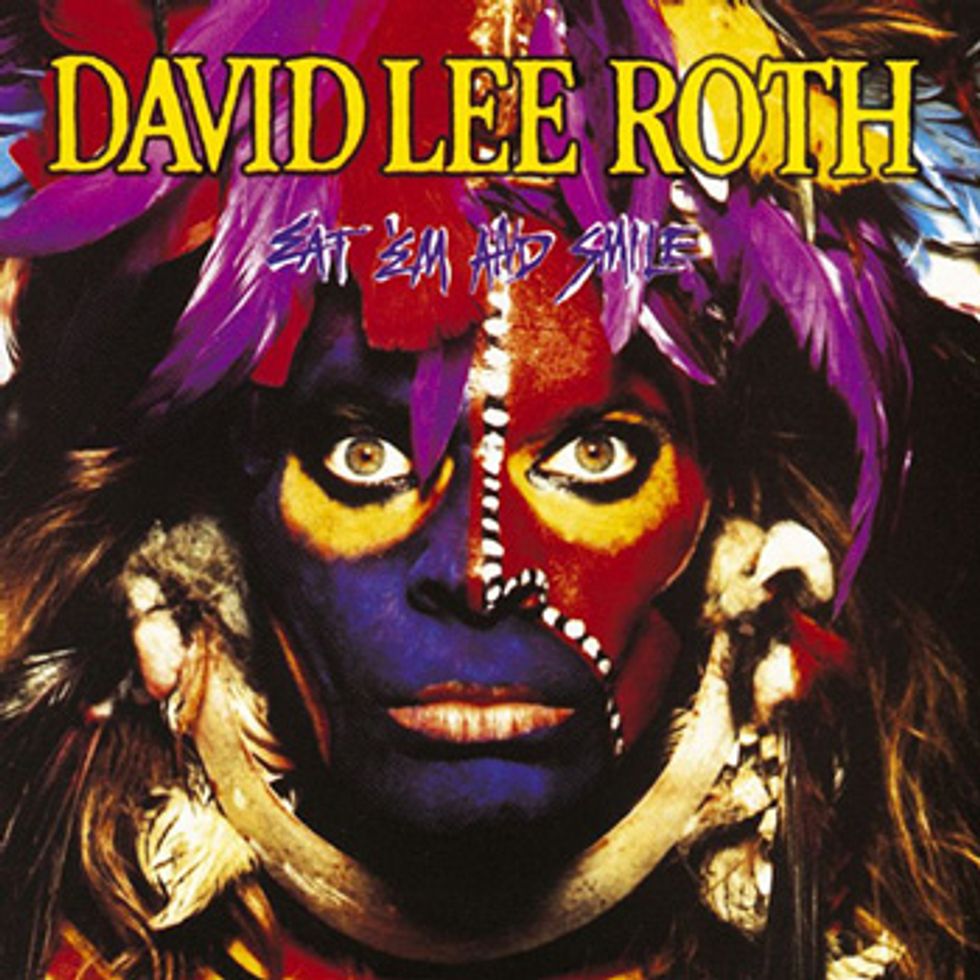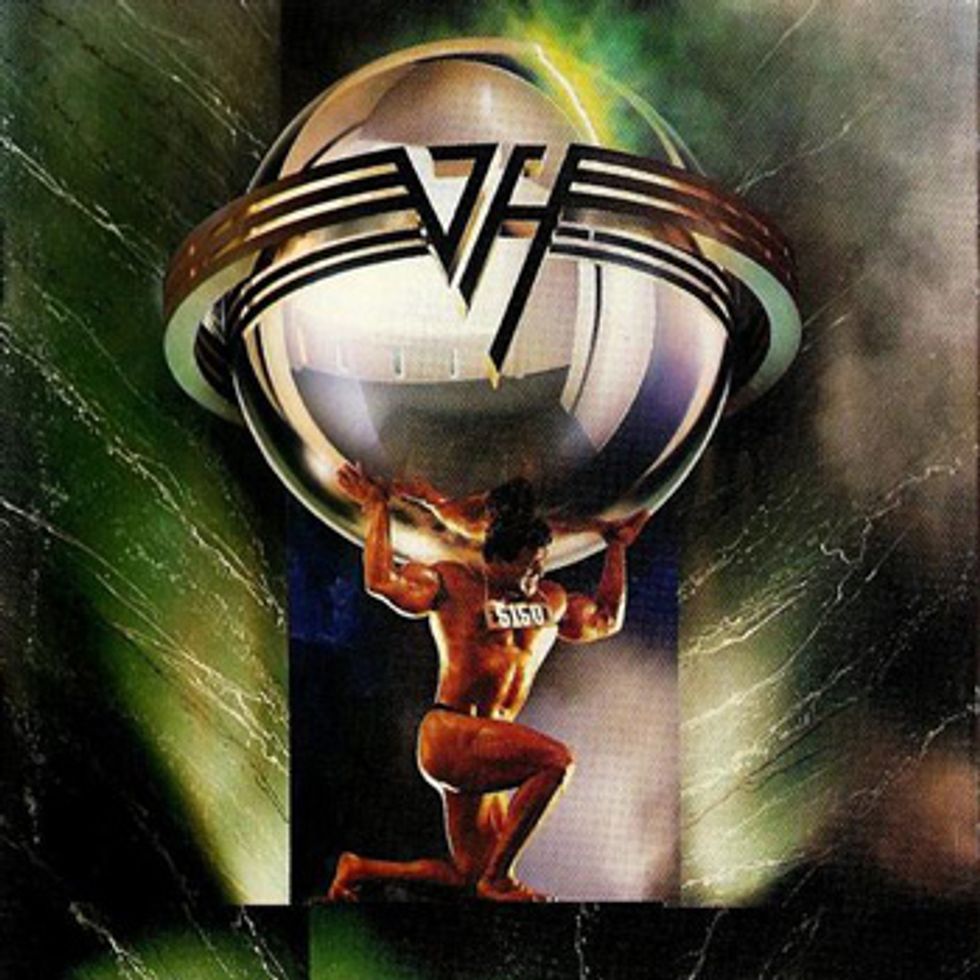I remember the days of running down to the mailbox to see if the latest of many guitar magazine subscriptions had arrived, always hoping for one of two players to be on the cover: Eddie Van Halen or Steve Vai. Nothing drove me to my room faster for a three-hour session with the metronome than a fresh article from one of these rags. In the ’80s, young guitarists had to learn scales, finger tapping, whammy bar stunts, and lightning-fast crazy picking in order to have the chops necessary to play the music of the time period. It's funny to look back at how we dressed and the acrobatic crazy style of guitar playing, but if y¬¬ou wanted the admiration of your high school peers—and more importantly, the attention of the big-haired, acid-washed-jean-sporting girls from homeroom—you had to separate yourself from the pack. These were the days of force-fed hair metal and gigantor arena rock perpetuated by the publishers of Circus, Hit Parade, and Metal Edge magazine, as well as MTV and record store advertisements. Ah yes, it was a great time to be a 13-year-old kid.
The biggest things to happen to this 13-year-old kid in 1986 was the release of the Van Halen album, 5150, as well as the release of the David Lee Roth album, Eat ’Em and Smile.
They were complete opposites in style, image, and content. On one side of the coin you had the dynamic, polished, and perfected recipe of Eddie and Sammy. On the other was the innovative-daredevil playing of Steve Vai, combined with the "WTF is he saying?" lyrical stylings of Diamond Dave—the original ass-less-chaps-wearing golden god of metallic entertainment. 5150 was drenched in keyboards, Simmons drums, and high, melodic vocal melodies—not to mention, great pop-rock songwriting. Eat ’Em, was filled with high-flying, impossible guitar and bass riffage, combined with the spirit and vision of the original blonde banshee, and DLR’s own brand of back-page Penthouse magazine, tongue-in-cheek lyrics.
Eat ’Em and Smile
Digging deep into Vai's tracks is an eye-crossing experience. Even today, more than 25 years later, nobody has intertwined the inventive power chord rhythm verse tracks, (thank you EVH), with mind-blowing lead guitar pyrotechnics and highly original noodling everywhere in between like Vai has. Picking apart his guitar lines track by track is a sonic adventure—and a surprising number of licks are actually played by Billy! There is a clickety-click tonality to Vai's playing, where you really hear the feel of his right hand in the guitar parts. Picking out individual notes in chords, and making them the connecting glue from riff to riff. He also makes wonderful use of the Floyd Rose, both in leads and in chord dynamics, bending and shaping movements by way of dips, wiggles, and dives.
Dave and the boys created a new style of music: Two-parts fire and ice musical imagery, one part pomp and diamond-studded fluff, and one part tight-rope walk between dynamics and silliness. It was a new Diamond Dave: stronger, faster, and bolder than ever.
The Roth show was nothing short of a full-scale sonic attack on the audience. Steve Vai wiggling like a charmed snake on his side of the stage, and Billy 'rasslin his bass around his body like a leather boa, were perfect bookends to Captain Charisma spinning, kicking, and gyrating in center stage. These guys were great entertainers, providing classic ’80s arena rock excitement that matched their insane musicianship.
5150
Eddie may be the greatest hard rock rhythm player ever. Creating solid, motor-revving song foundations, often with two- and three-note power chords, and combing that with his brother’s constantly cymbal-washed backbeat, makes a huge sound. Recently strapping on the high-dollar headphones and going inside the tracks, I realized that Alex was overplaying and attacking many of the tracks with furious drumming, while Eddie is actually keeping it more reserved and just performing the track in a solid, rhythmic mantra, choosing the right breaks between lyric lines, to throw a little flash here and there.
The introduction of the Steinberger TransTrem into Eddie’s hands was something that even I was a little skeptical about (I thought I knew it all at the ripe old age of 13), because even with the red/white/black graphic, at the end of the day it still looked silly. Yet the riff of “Get Up” and intro of “Summer Night” are just outright innovative and unique.
Van Halen was having fun. They were putting out the good party vibes, with grins from ear to ear, dressing in pajamas on a sleek stage and just running, jumping, and providing stadium-energized rock with plenty of sing-along anthems and Bic lighter opportunities.
It was a good time to be a kid. The Van Halen split provided a new spark for both camps, and you could be a fan of both sides, because they each gave out enough of a different energy that you didn't have to choose which was better. They were both great power punch rock albums that a young guitarist could really sink his fingers into.
27 Years Later
With the perspective of a quarter-century behind me, this is what I see as the high and low points for each record:
I love the free form feel of Eat ’Em and Smile—feeling like the rock train could go off the rails at any moment lends to the excitement of Steve Vai's playing. “Elephant Gun” was a great example of the power and fun of the new band: classic VH double-bass-drum groove with classic Diamond verbal musings. “Big Trouble” was my favorite from first listen—it just had my curiosity piqued. I still have no idea what the song is about, but it's easy to lose yourself in Vai's trickery and string-weaving wonders. The song “Bump and Grind,” sounds to me like the band looks and “Shyboy,” despite being an awesome Billy Sheehan tune before Dave, remained a great performance after Dave. “Yankee Rose” was the first thing we saw from the spandex- and ladies’ boot-clad, good-time having DLR band.
On the downside, the album is too short: 30 minutes and 39 seconds is far too short for such a highly anticipated release. Plus, only six of the 10 tracks are original Roth compositions—nearly half of the record is covers of others, which gives the appearance of a rushed album, trying to keep up with the Van Halen brothers’ release. The energy captured on this album is nothing short of circus sideshow fun, and it would have served well to have had a little more of it.
Overall I think the songs, melodies, riffs, and lyrical content of 5150 are great. It's a full album feel—fast songs, slow songs, songs about girls ... all the important ingredients. The rhythm guitar track of the title song—not just the supersonic intro but the single-note simplicity of the verses and riff note choice—is a thing of guitar hero beauty. In addition to faves “Best of Both Worlds,” “Summer Nights,” and “Get Up,” I have to tip my hat to the opening song, “Good Enough.” In 1986, we were buying cassette tapes—no skipping tracks, and you started the album on the first song. The first song was the first thing the band wanted you to hear, and in crazy anticipation of only the biggest thing to happen in my 13 years of life at that time, putting in the new Van Halen album, was something of a religious experience. I had no idea what to expect, and by the end of “Good Enough,” I knew that I was going to accept this new VH album with open arms … open arms raised high, with devil horns flying!
Minuses? Short haircuts and electronic drums! I must admit that at the time, I loved the sound of the drums and could not get enough of the round-the-world tom rolls that Alex is known for (it was the ’80s after all), but sitting here 25+ years later, the tones of those drums don't hold weight to me.
In summation, 1986 was a fork in the rock ’n’ roll highway, and I liked both directions! Please share your memories and perspective in the comments section below.
 Gearmanndude...born on planet Rockturneas...sent by the ancient tone lords to provide public service to planet Earth...to demo gear, man. Dude...
Gearmanndude...born on planet Rockturneas...sent by the ancient tone lords to provide public service to planet Earth...to demo gear, man. Dude...












![Rig Rundown: Russian Circles’ Mike Sullivan [2025]](https://www.premierguitar.com/media-library/youtube.jpg?id=62303631&width=1245&height=700&quality=70&coordinates=0%2C0%2C0%2C0)
















![Rig Rundown: AFI [2025]](https://www.premierguitar.com/media-library/youtube.jpg?id=62064741&width=1245&height=700&quality=70&coordinates=0%2C0%2C0%2C0)




















 Zach loves his Sovtek Mig 60 head, which he plays through a cab he built himself at a pipe-organ shop in Denver. Every glue joint is lined with thin leather for maximum air tightness, and it’s stocked with Celestion G12M Greenback speakers.
Zach loves his Sovtek Mig 60 head, which he plays through a cab he built himself at a pipe-organ shop in Denver. Every glue joint is lined with thin leather for maximum air tightness, and it’s stocked with Celestion G12M Greenback speakers.






